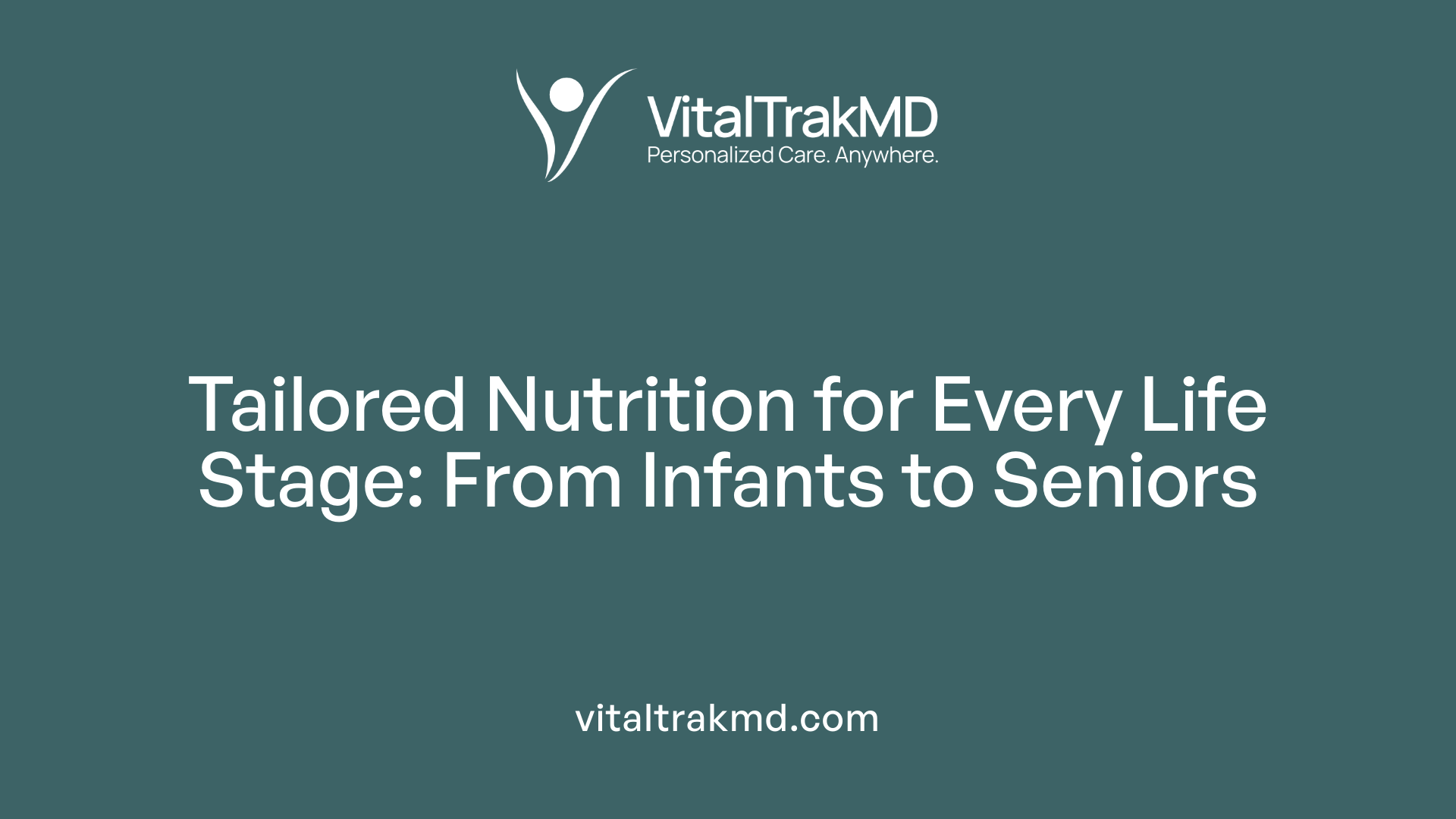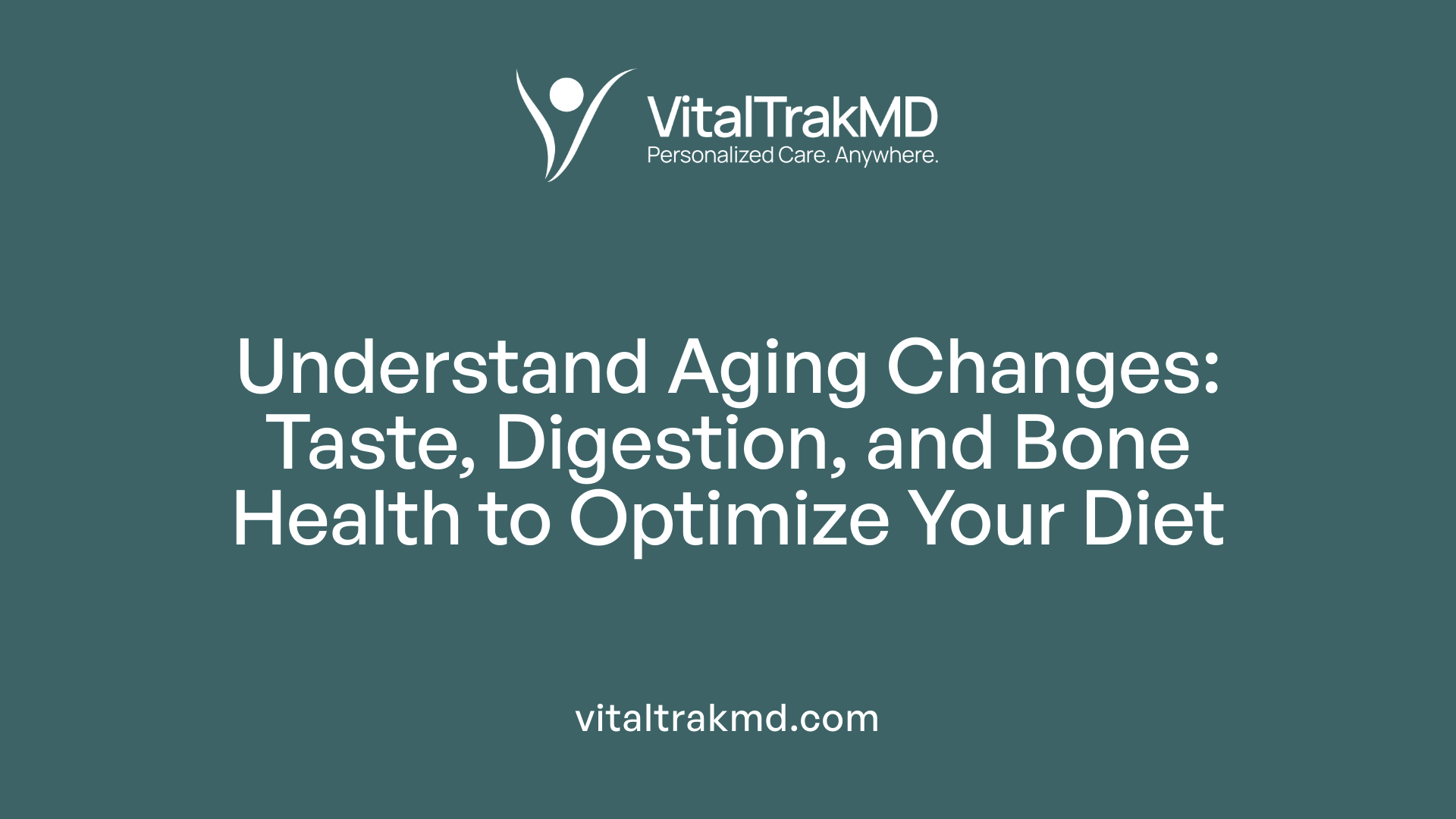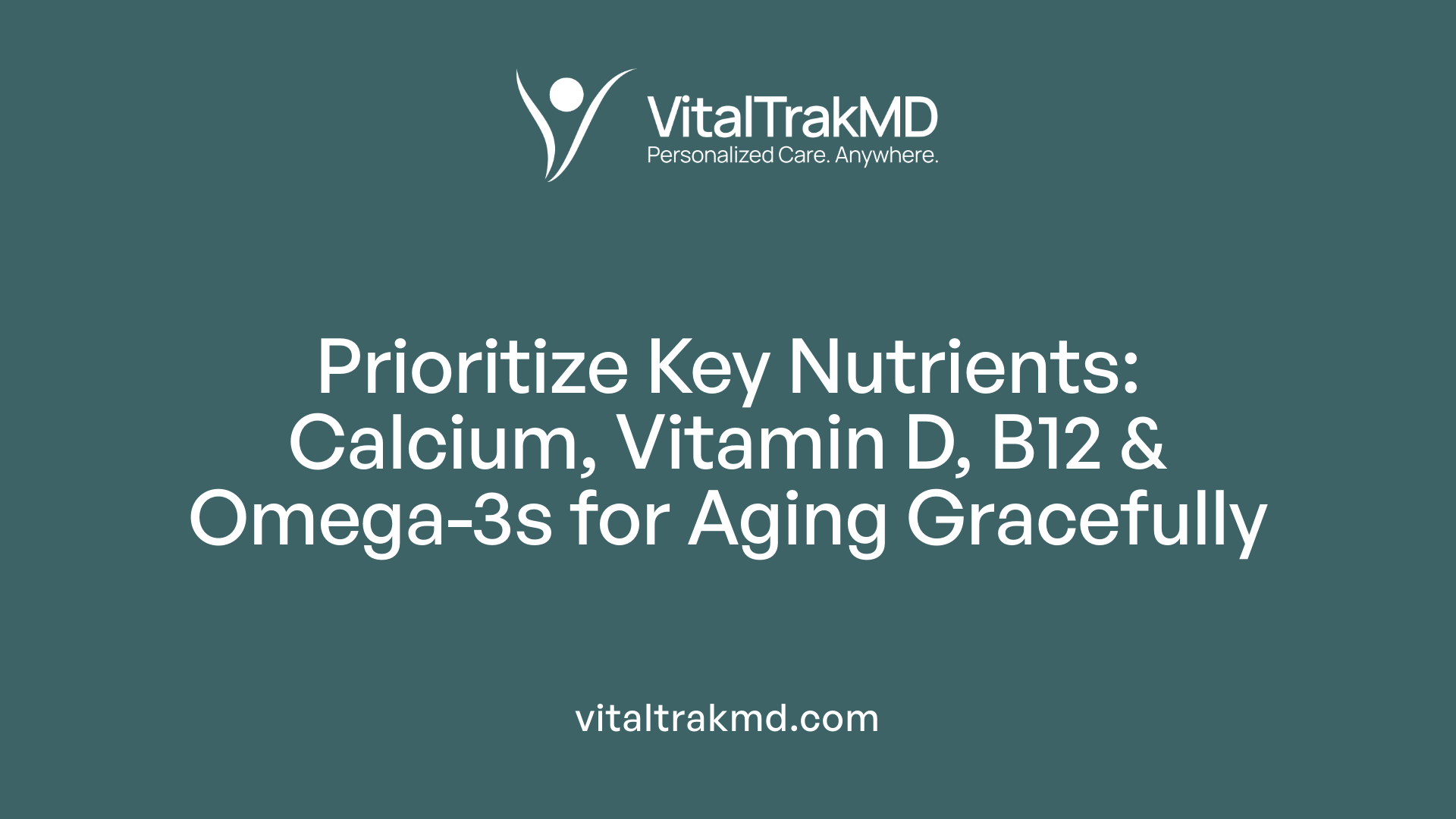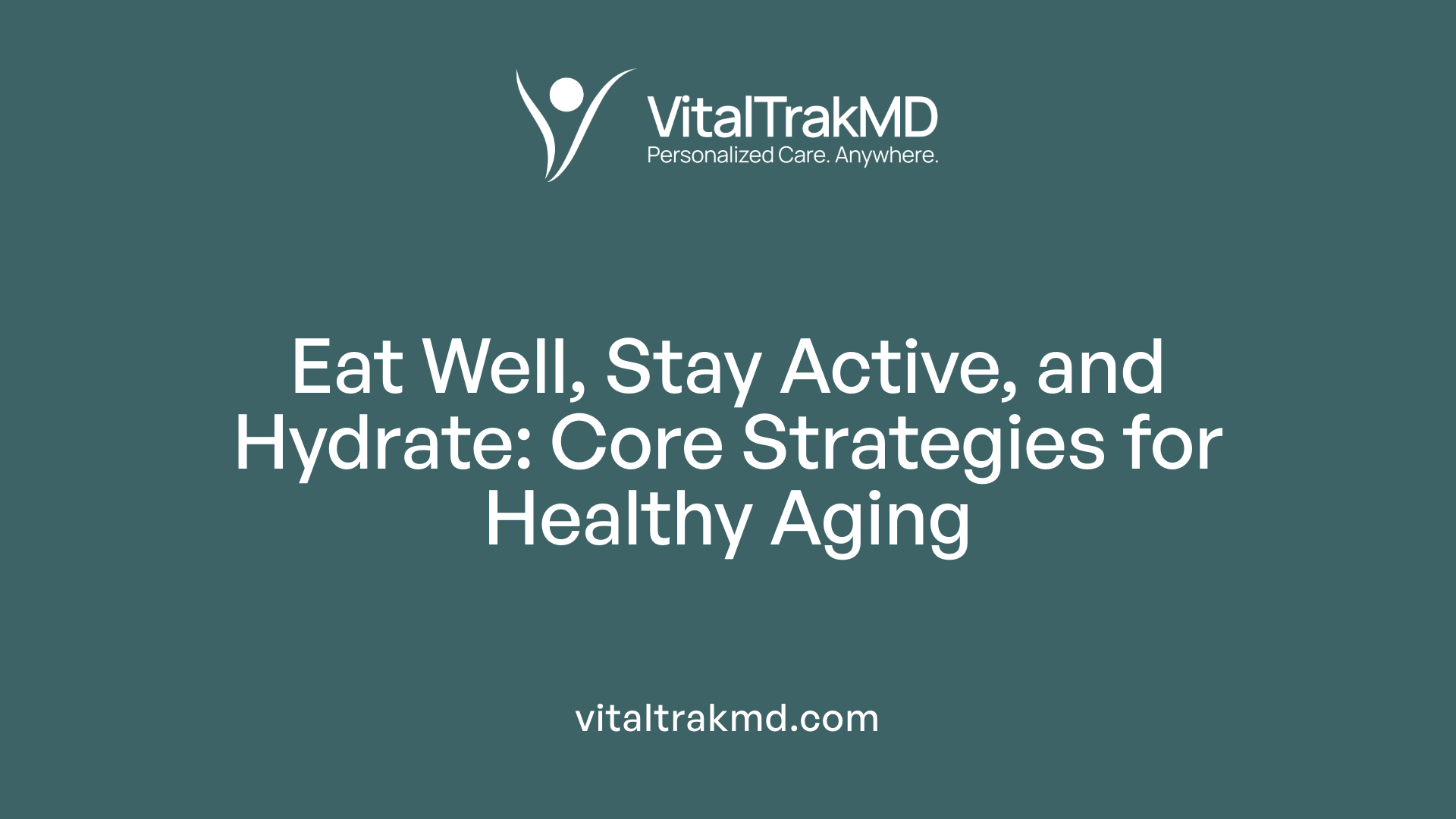How Nutrition Needs Evolve With Age — and How to Address Them

Understanding the Changes in Nutrition as We Age
As individuals grow older, their bodies undergo numerous physiological changes that influence their nutritional needs. Recognizing these shifts and adjusting dietary strategies accordingly can significantly improve quality of life, maintain independence, and reduce the risk of chronic diseases. This article explores how nutritional requirements evolve across different life stages, the physiological factors impacting nutrition in older age, and practical approaches for addressing these changes effectively.
Nutritional Needs Across Different Age Groups

How are the nutritional needs different for each age group?
Nutritional requirements change throughout life to support growth, development, and health maintenance at each stage.
Infants and young children depend heavily on breastmilk or formula for essential nutrients and immune support during the first 6 months. Once they start solid foods around 6 months, those foods should be rich in iron and nutrients vital for rapid growth.
Children and adolescents experience growth spurts that demand increased energy, protein, vitamins, and minerals. Adolescents need nutrient-dense foods to promote healthy bone formation and muscle development, emphasizing calcium, vitamin D, and protein.
Adults, including pregnant and breastfeeding women, must tailor their diet to meet specific needs. Pregnant women require increased folate, iron, and calcium to support fetal development, while breastfeeding women need extra calories and nutrients to nourish both mother and child.
Older adults should focus on nutrient-rich foods that support bone strength, muscle maintenance, and cognitive health. Due to decreased absorption of certain nutrients like vitamin B12 and calcium, they often require supplementation or fortified foods.
In summary, each age group has unique nutritional goals related to their physical development and health. Ensuring proper intake across all stages of life prevents deficiencies and supports optimal wellbeing, growth, and disease prevention.
Physiological Changes Impacting Nutrition with Age

How does aging affect physiological factors influencing nutrition?
As we grow older, our bodies undergo various physiological changes that significantly impact nutritional health. These changes can alter how we perceive, digest, and absorb nutrients, as well as influence our overall dietary needs.
One of the most noticeable impacts of aging is the decline in taste and smell. Reduced sensory perception can make food less appealing, decreasing appetite and leading to lower food intake. This diminished sensory pleasure may discourage older adults from consuming enough nutrient-rich foods needed for good health.
Gastrointestinal changes also play a critical role. With age, the stomach produces less gastric acid, which is essential for digesting proteins, absorbing vitamin B12, and calcium. Additionally, slowed digestion can result in a feeling of fullness after smaller meals, further reducing food consumption. These factors contribute to higher risks of deficiencies in key nutrients vital for maintaining energy levels, bone density, and overall health.
The loss of muscle mass, known as sarcopenia, and the decrease in bone density are common aging issues. These shifts in body composition elevate the importance of consuming adequate protein, calcium, and vitamin D to support muscle strength and bone health. Ensuring sufficient intake of these nutrients can help slow muscle wasting and prevent osteoporosis.
Hormonal fluctuations and declining immune function also impact nutrient processing. Changes in hormone levels can influence metabolism, appetite regulation, and nutrient absorption, making nutritional management more complex. A weakened immune system, or immunosenescence, can increase vulnerability to infections and impair recovery, emphasizing the importance of a nutrient-dense diet.
Sensory and cognitive impairments add additional layers of challenge. Difficulties with chewing or swallowing, along with cognitive decline, may alter food choices, reduce meal enjoyment, and increase food safety risks. These issues highlight the need for tailored nutritional strategies, including textured diets, flavor enhancements, and safety precautions.
In summary, aging affects multiple physiological systems that influence our nutritional status. Awareness of these changes can guide dietary adjustments, such as increasing nutrient-dense foods, supporting digestion, and maintaining strong bones and muscles, ultimately promoting healthier aging and improved quality of life.
Common Nutritional Challenges Facing Older Adults
What are common nutritional challenges faced by older adults?
Older adults encounter several unique nutritional hurdles that can impact their overall health and well-being. One of the most widespread issues is reduced appetite, often resulting from sensory decline, health problems, or the side effects of medications. As taste and smell diminish with age, the enjoyment of food decreases, which can further reduce food intake and lead to malnutrition.
Oral health problems are also common among seniors. Tooth loss, gum disease, or dentures that do not fit well can make chewing and swallowing painful or difficult. These issues limit the variety of foods they can eat, often reducing the intake of essential nutrients such as calcium, vitamin D, and protein.
Micronutrient deficiencies are another concern. Vitamin B12 absorption decreases significantly with age due to reduced stomach acid, leading to potential deficiencies. Similarly, vitamin D and calcium levels often decline due to less sun exposure and impaired absorption, increasing the risk of osteoporosis. Other micronutrients like magnesium and vitamin E may also be deficient, affecting bone health, immunity, and cognitive function.
Difficulty swallowing, known as dysphagia, presents additional challenges. It requires diet modifications to ensure safety during eating and avoid choking or aspiration. Special textured foods or thickened liquids may be necessary.
These interconnected challenges can lead to malnutrition and dehydration, weakening immune defenses and worsening chronic conditions such as heart disease, arthritis, and diabetes. Recognizing and addressing these issues through personalized nutrition plans, regular health screenings, and supportive care is essential for maintaining quality of life in older adults.
In summary, aging brings natural changes that affect appetite, oral health, absorption, and swallowing. Proactive strategies including dietary adjustments, oral health care, and nutritional supplementation can help mitigate these challenges and promote healthy aging.
Essential Nutrients for Healthy Aging

What nutrients do elderly need and why?
As people age, their nutritional needs change, requiring a focus on specific vitamins and minerals to support overall health and prevent age-related issues.
Calcium and vitamin D play crucial roles in maintaining strong bones and preventing osteoporosis, a common concern for older adults. Good sources include dairy products, calcium-fortified plant milks, leafy greens, and sunlight exposure which helps the skin produce vitamin D.
Vitamin B12 absorption declines with age due to reduced stomach acid, putting older adults at risk of deficiency. Consuming B12-rich foods such as shellfish, dairy, and fortified cereals, or considering supplements, is often recommended.
Omega-3 fatty acids, predominantly found in fatty fish like salmon, support brain, heart, and joint health, reducing inflammation and possibly decreasing the risk of cognitive decline.
Dietary fiber, abundant in fruits, vegetables, beans, and whole grains, promotes digestive health, alleviates constipation, and may help prevent diverticular disease.
Magnesium and potassium are essential for maintaining heart rhythm, muscle function, and electrolyte balance. These minerals are plentiful in nuts, seeds, leafy greens, and bananas.
Vitamins A, C, and E act as antioxidants, protecting cells from damage and supporting immune function. B vitamins, including folate, B6, and B12, are integral for converting food into energy and supporting a healthy nervous system.
To promote healthy aging, older adults should prioritize these nutrients through balanced meals, fortified foods, and supplements if needed, aiming to meet recommended intake levels for optimal health.
Strategies to Support Healthy Aging through Diet and Lifestyle

What strategies for maintaining optimal nutrition as one ages?
Supporting nutrition as we age requires a multi-faceted approach that addresses physiological changes, health status, and lifestyle factors. A central component is consuming a balanced, nutrient-rich diet. This includes a variety of fruits and vegetables, whole grains, lean proteins such as seafood, poultry, beans, and nuts, as well as low-fat dairy products. These foods supply essential vitamins, minerals, and fiber, supporting overall health and reducing the risk of chronic diseases like osteoporosis, heart disease, and diabetes.
Hydration also becomes more critical with age. Older adults often experience a diminished sense of thirst, leading to higher dehydration risk. Drinking adequate fluids such as water, fortified plant-based milks, or unsweetened fruit juices helps maintain hydration, regulate body temperature, and support organ function.
Regular physical activity, especially strength training and aerobic exercises, contributes significantly to aging well. Exercise helps preserve muscle mass, strengthen bones, improve balance, and stimulate appetite, which can decline due to various health factors.
Meal planning and social eating are powerful tools to foster better nutrition. Preparing appealing, easy-to-chew foods accommodates sensory declines and dental issues, enhancing food intake. Sharing meals with others not only improves enjoyment but also supports mental health and reduces feelings of isolation.
Food safety practices are vital to prevent foodborne illnesses, especially since immune function declines with age. Proper handling, cooking, and storage of foods minimize health risks.
For those with nutrient deficiencies or specific health conditions, dietary supplements might be necessary. These should always be taken under the guidance of healthcare professionals to avoid redundancies or imbalances.
Together, these strategies form an effective framework for older adults to sustain health, vitality, and independence through mindful diet and lifestyle choices.
Engaging in routine health assessments and personalized counseling can further optimize nutritional plans during aging. Various government programs and community resources, such as meal delivery services or nutritional education, support this journey toward healthier aging.
By adopting these practices, older adults can not only meet their nutritional needs but also enjoy a higher quality of life, greater energy levels, and decreased risk of age-related health issues.
This comprehensive approach emphasizes that aging gracefully involves continuous attention to diet, hydration, activity, safety, and social connection, all contributing to a vibrant and healthy later life.
--
For more information on how to maintain a healthy diet as you age, search with the phrase "Healthy aging diet strategies" to find tailored resources and expert guidance.
Resources and Practical Tips for Achieving Better Nutrition
 Supporting better nutrition in older adults can be achieved through various resources and practical strategies. Government programs like SNAP (Supplemental Nutrition Assistance Program), Congregate Nutrition Services, and Home-Delivered Nutrition Services offer access to nutritious foods for seniors with limited income or mobility challenges. Community centers and senior organizations frequently provide nutritional counseling, cooking classes, and educational materials designed specifically for aging populations.
Supporting better nutrition in older adults can be achieved through various resources and practical strategies. Government programs like SNAP (Supplemental Nutrition Assistance Program), Congregate Nutrition Services, and Home-Delivered Nutrition Services offer access to nutritious foods for seniors with limited income or mobility challenges. Community centers and senior organizations frequently provide nutritional counseling, cooking classes, and educational materials designed specifically for aging populations.
Reputable health organizations, such as the Academy of Nutrition and Dietetics and federal health agencies, offer trusted guidelines, downloadable resources, and online tools to assist with meal planning, understanding nutrition labels, and food safety practices. These resources help older adults and caregivers make informed choices.
Practical tips for maintaining a healthy diet include shopping with a grocery list, focusing on nutrient-dense foods like fruits, vegetables, whole grains, lean proteins, and dairy. Reading food labels carefully helps identify healthier options with less added sugar, sodium, and unhealthy fats. Swapping ingredients—like using herbs instead of salt or choosing baked over fried foods—can make meals healthier without sacrificing flavor.
For those with dental issues or limited income, community programs often provide meal assistance or access to affordable, healthy ingredients. Addressing barriers like swallowing difficulties or low appetite can involve texture modifications and social eating, which encourage better intake. Healthcare professionals, including dietitians, can offer personalized guidance and interventions.
Overall, utilizing these resources and implementing simple dietary adjustments can significantly improve nutritional quality for older adults, supporting their health and well-being.
Promoting Healthy Aging through Informed Nutrition Practices
Adapting dietary habits to meet the evolving nutritional needs of aging populations is essential for fostering vitality, independence, and overall well-being. By understanding physiological changes, addressing common challenges, and leveraging available resources, older adults and caregivers can implement practical strategies that support optimal health throughout later life. Emphasizing nutrient-dense foods, hydration, physical activity, and food safety, along with personalized medical guidance, paves the way for a healthier tomorrow. Promoting awareness and proactive nutritional management will ensure that aging is not just a decline, but a stage of life filled with vitality and resilience.
References
- Nutrition as We Age: Healthy Eating with the Dietary Guidelines
- How Your Nutritional Needs Change as You Age - Healthline
- Nutrition Information for Older Adults - MyPlate.gov
- Nutrition for Older Adults - MedlinePlus
- Food and your life stages | Better Health Channel
- Nutrition and Aging - 9.322 - CSU Extension
- Healthy eating, nutrition, and diet | National Institute on Aging
Recent articles
Want to Feel Better and Live Healthier?
Join hundreds of patients taking control of their health with personalized care that fits their life – not the other way around.
Rated 4.8/5 by 32+ customers







